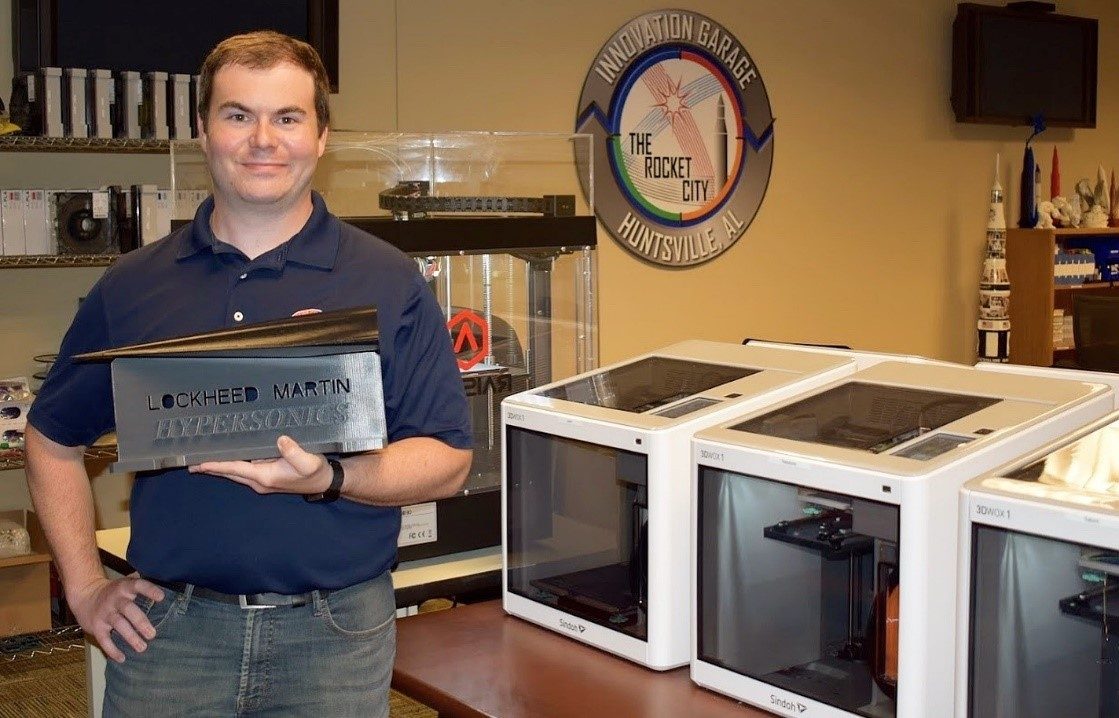The ability to travel fast is a hallmark of science fiction movies. The Starship Enterprise, Cheyenne Dropship and Millennium Falcon—all have their roots in aircraft or space planes that can travel at speeds well over Mach 5.
Today, the dream of technology traveling across the world in a few short hours is getting closer to reality.
Engineers at Lockheed Martin are taking lessons from early hypersonic flights, combined with the latest advancements in aviation technology, to design and develop the next wave of mission-critical hypersonic vehicles.
Past Innovation, Meet Future Application
More than 50 years ago, a B-52 aircraft took off from Edwards Air Force Base in the hot, dry desert of California, carrying under its wing a rocket-powered experimental aircraft—the North American X-15. At 45,000 feet, the X-15 was launched into flight, reaching speeds of 522 miles per hour and landing at Rogers Dry Lake just a few miles away.
While the pilot would only have five minutes of actual flying time, the monumental first flight of the X-15 would set the stage for later tests of the winged aircraft that would be the first to attain velocities of Mach 4, 5 and 6.
The era of hypersonic flight had arrived.
How Fast is Hypersonic Fast?
Subsonic = <610 mph | Transonic = 610-915 mph | Supersonic = 915-3,840 mph | Hypersonic = 3,840+ mph
Our engineers are leveraging the work of several decades, including the Hypersonic Technology Vehicle-2 (HTV-2) that flew in 2010 and 2011, to design hypersonic vehicles that will stay ahead of the advancing threat.
Modern passenger airplanes fly at 550 miles per hour, or about 8 miles per minute. A Mach 2 fighter jet flies at about 1,400 miles per hour, or about 20 miles per minute. At speeds of Mach 5 and higher, friction can heat an aircraft’s exterior enough to melt a conventional metallic aircraft, creating a number of complex engineering and physical challenges.
With its extensive experience designing aircraft and missiles, Lockheed Martin leverages expertise from across the corporation to tackle these challenges with ingenuity and speed — yes, even more speed.
Altitude: How High?
747 Airliner = 30,000-40,000 feet | U-2 Reconnaissance Aircraft = 70,000 feet | HTV-2 Hypersonic Tech Vehicle = <180,000 feet
Hypersonic vehicles must be designed for extreme temperatures at altitudes well above 50,000 feet. A hypersonic vehicle at ground level would experience pressures greater than 700 pounds per square inch—which can be compared to an elephant standing on your foot. Simply put, higher altitudes lower the pressure forces on a hypersonic vehicle to levels that allow it to stay together.

Lockheed Martin engineers are already creating these technologies today. Across our business, teams are designing, developing and building hypersonic vehicles to support flight test demonstration. One of these engineers is Ryan, who works on hypersonic programs at Lockheed Martin in Huntsville, Alabama. Check out his story:
When you were growing up, what did you want to be?
Truth be told, following in my dad’s footsteps, I wanted to be an engineer at Lockheed Martin. Living in Huntsville, the Rocket City, I’ve always grown up with some of the pinnacles of engineering achievement as a part of the landscape, specifically the vertical Saturn V at the Space and Rocket Center. The constant reminder of the incredible achievements of the space programs inspired me to want to push the boundaries of engineering and technology.
Other than really, really fast — what does a job with hypersonic technology look like?
The high visibility and importance of these capabilities to our national defense creates a challenging and engaging work environment. The criticality of hypersonic vehicle capabilities has allowed significant cross collaboration between the leading experts across industries. The energy of national support has significantly accelerated the development of these vehicles. So, take it from someone on the front lines, the advancement of hypersonic tech is moving fast…really fast.
What do you want today’s engineering students to know that you didn’t while in school?
To exceed your own expectations as a student in STEM, my advice starts with being adaptable to every situation. Start by setting long and short-term goals that will challenge you, while still growing your passions.
Favorite Lockheed Martin aircraft?
Definitely a toss-up between the F-35 and the AC-130.
Hypersonic Systems Approach the Runway
For more than 30 years, Lockheed Martin has invested in making hypersonic systems practical, fieldable and affordable. As the Department of Defense’s highest technical priority, our scientists and engineers are developing game-changing solutions, proving that at Lockheed Martin, your mission is ours.




